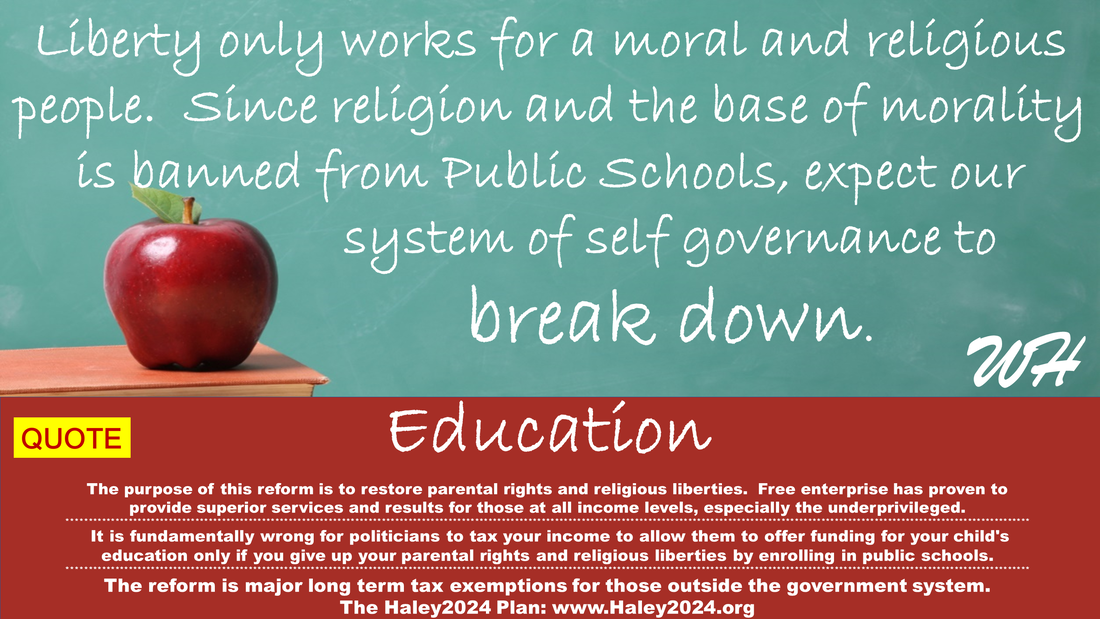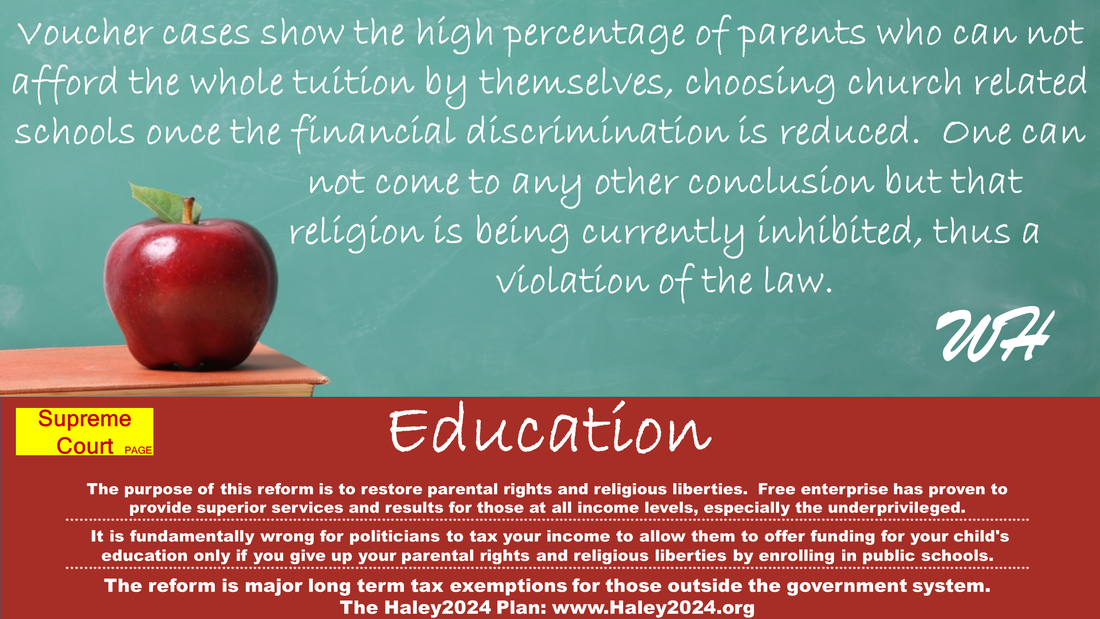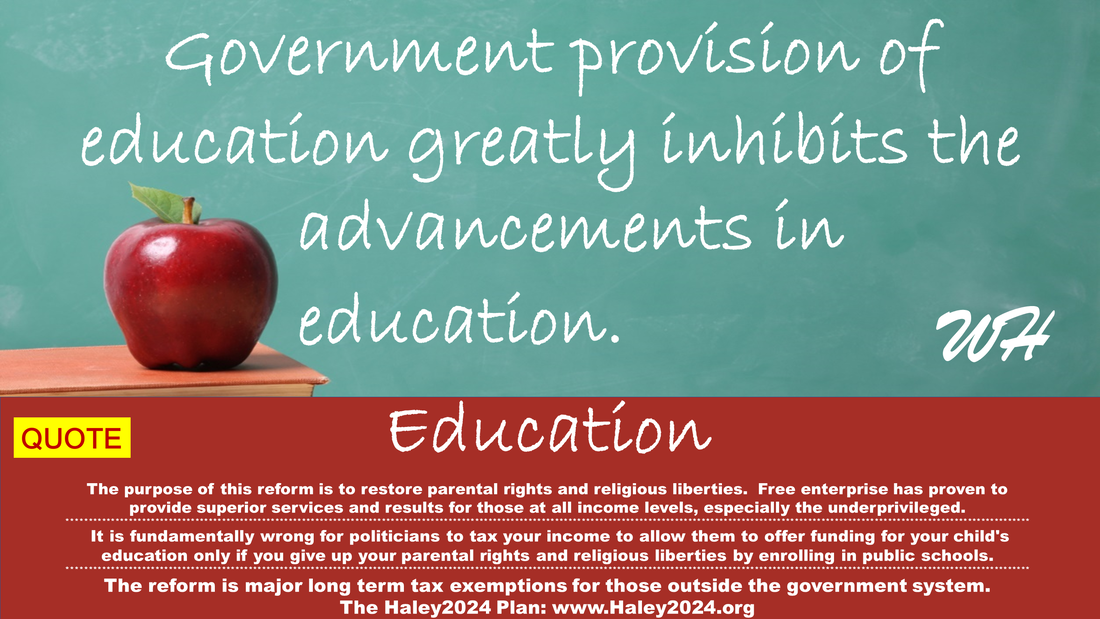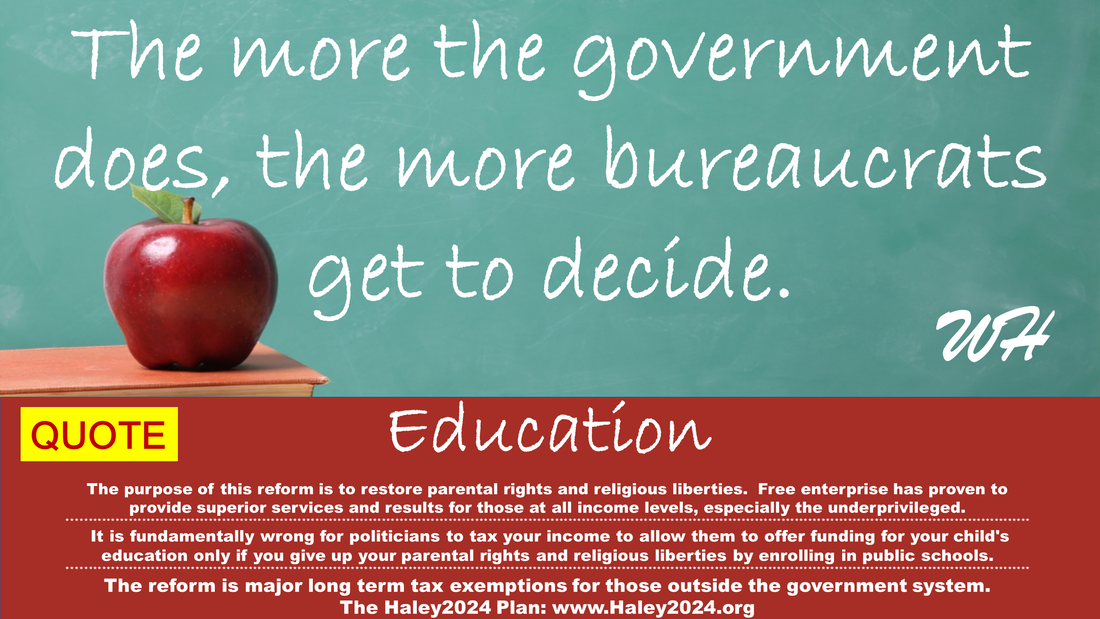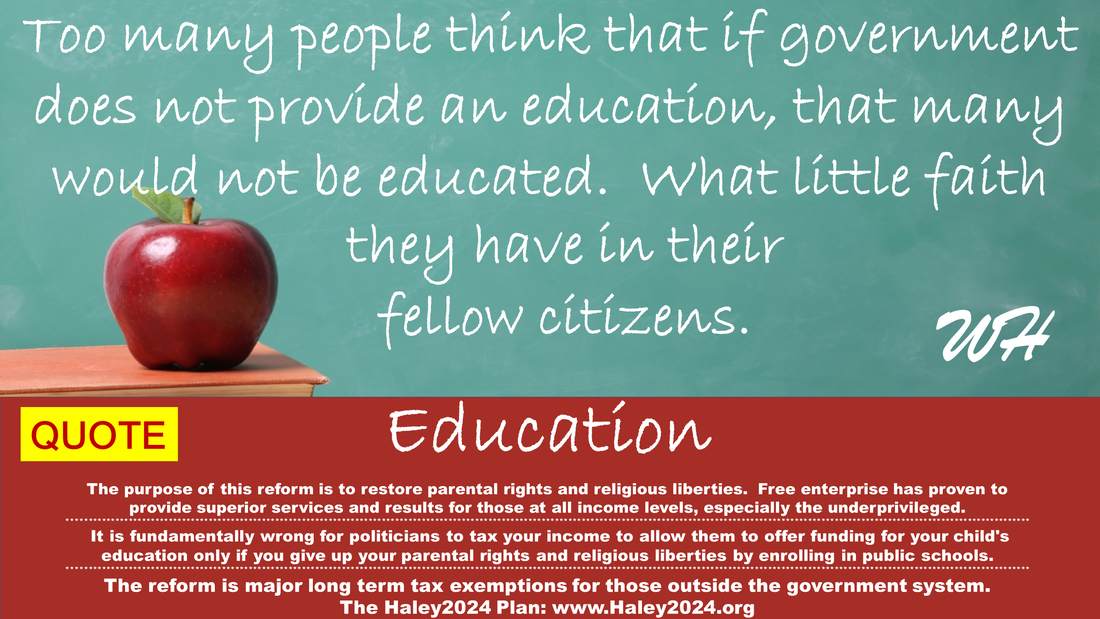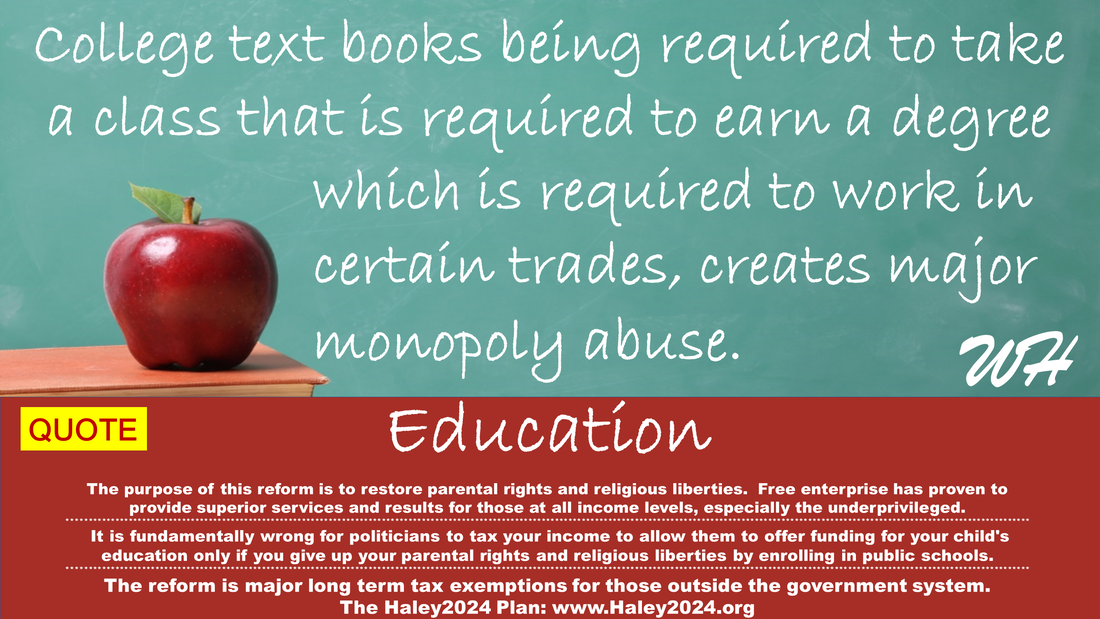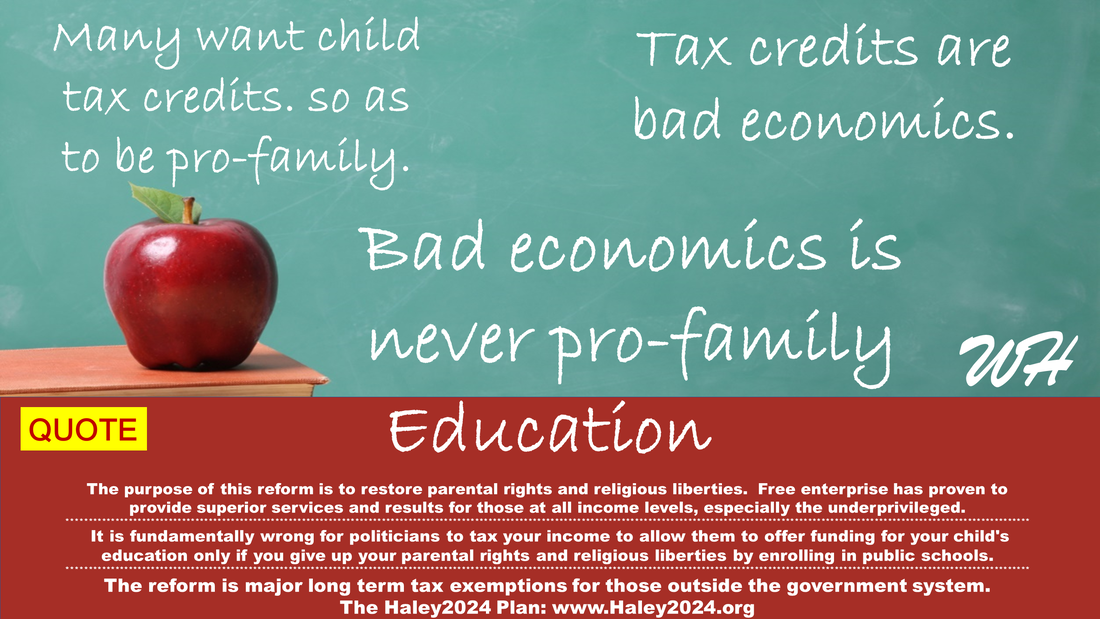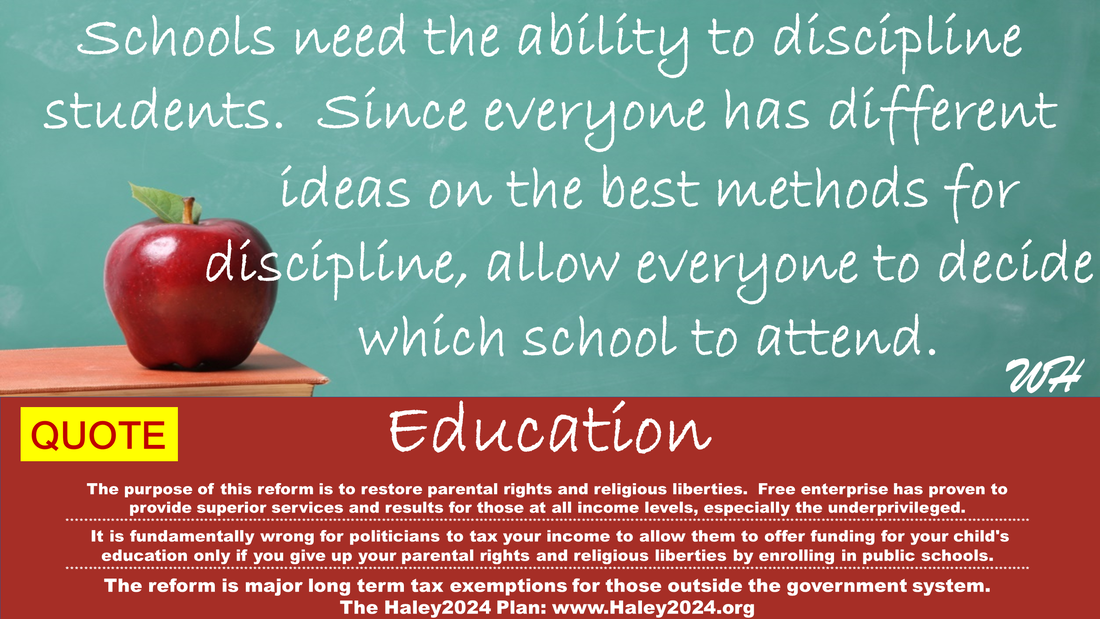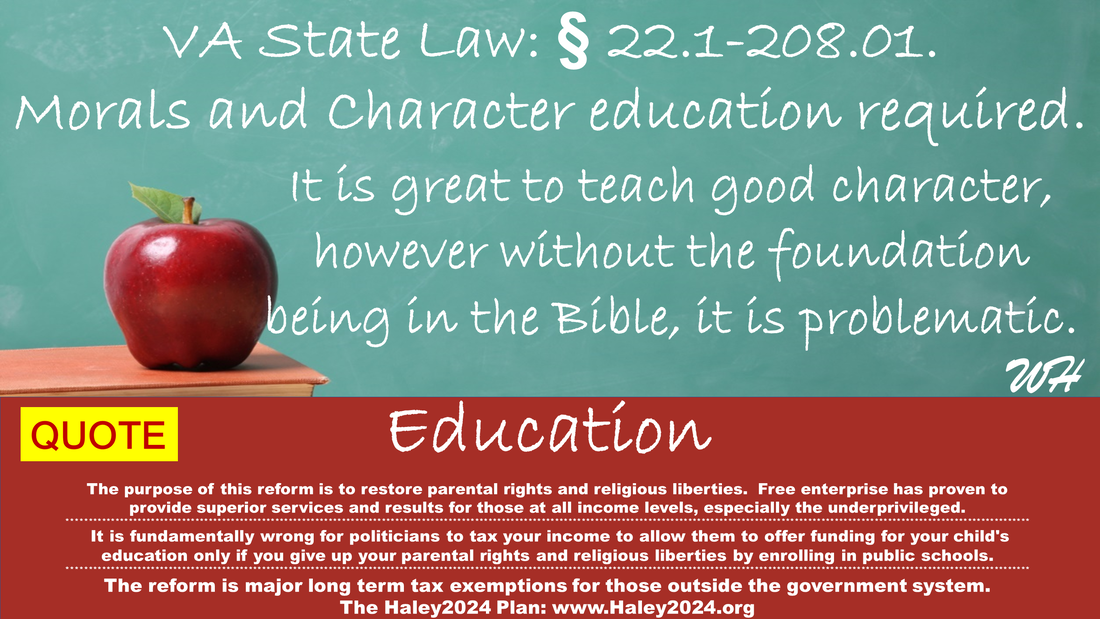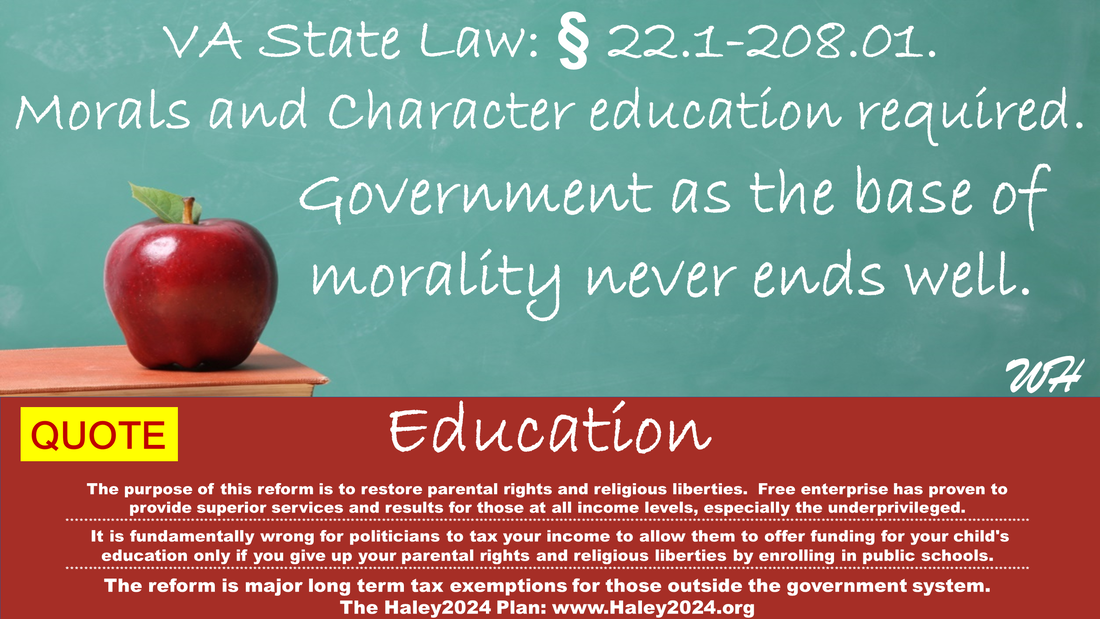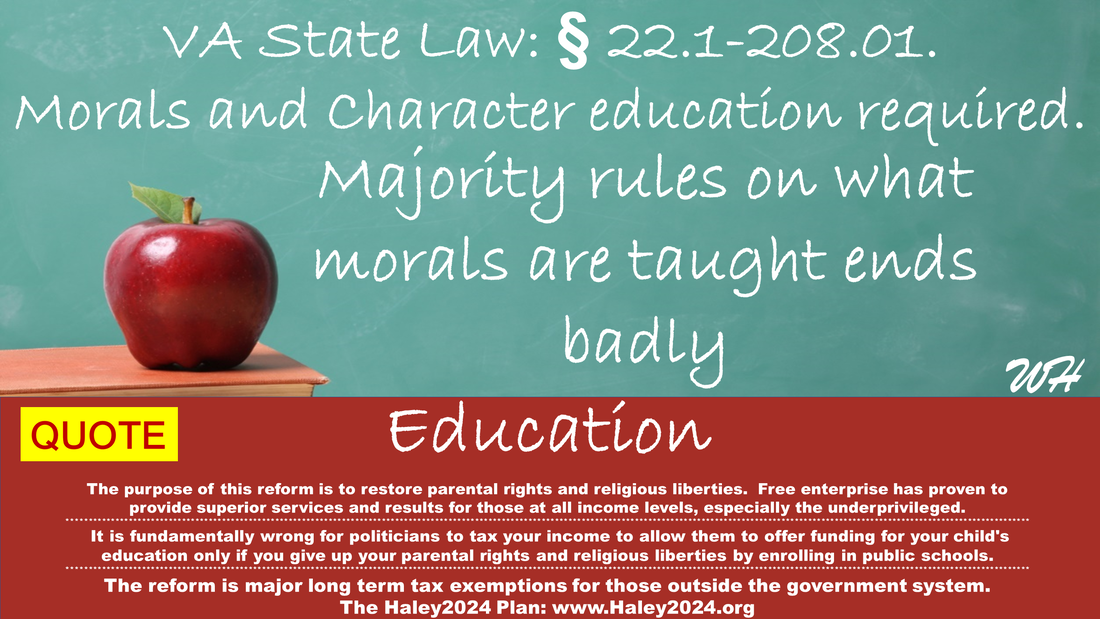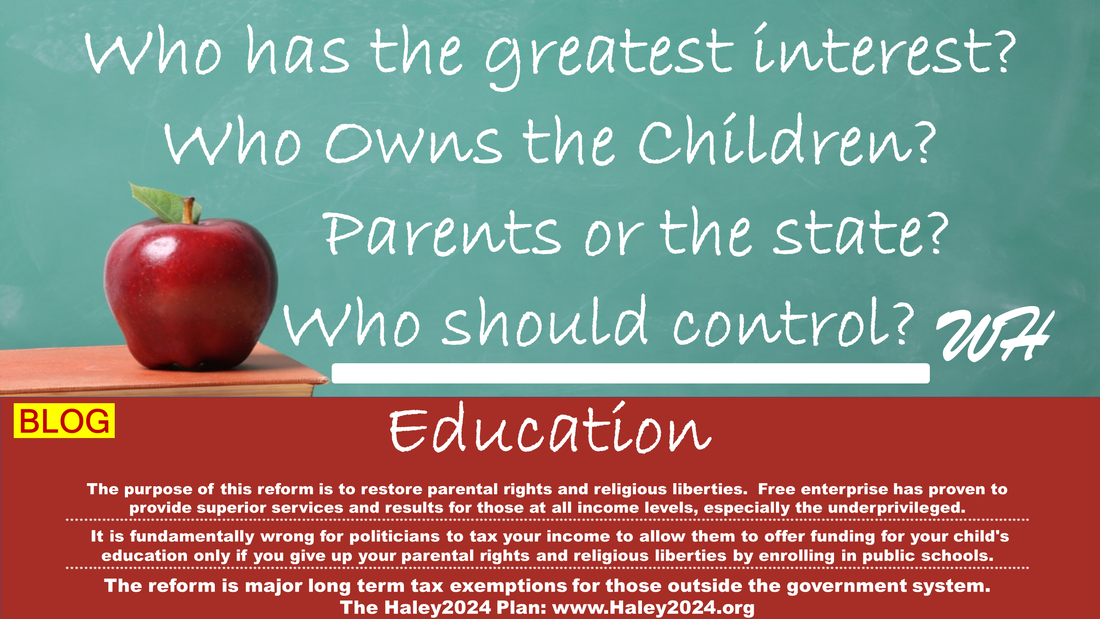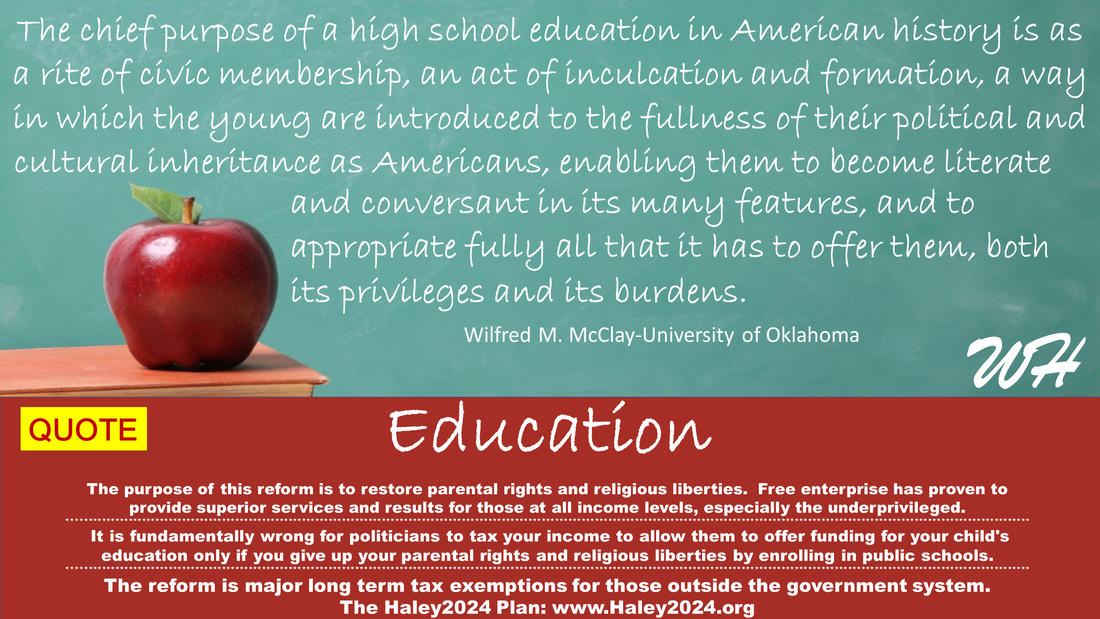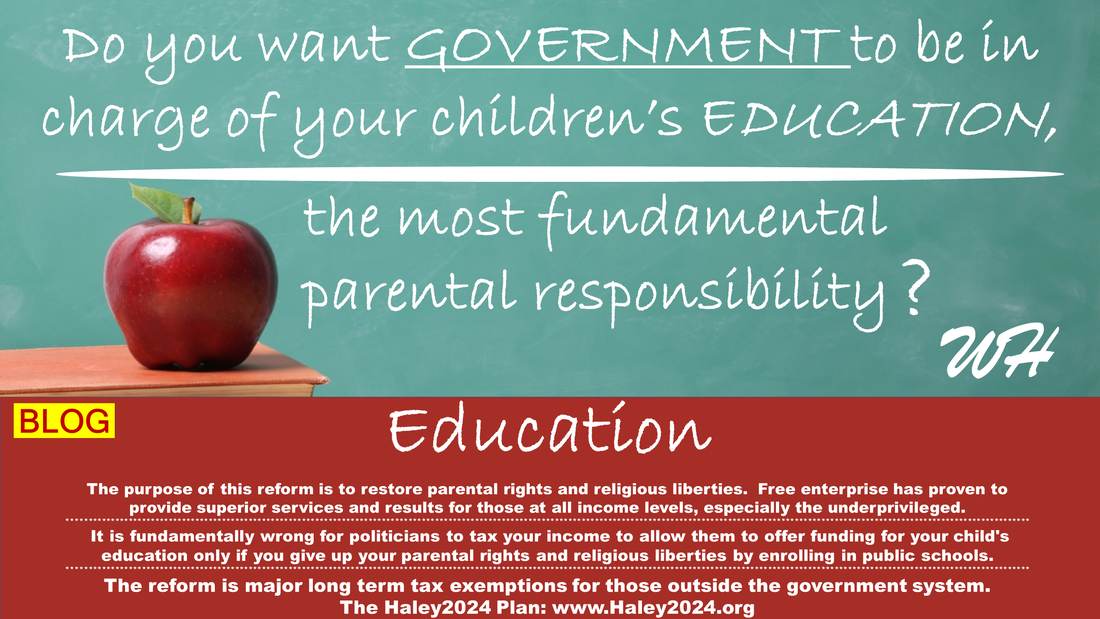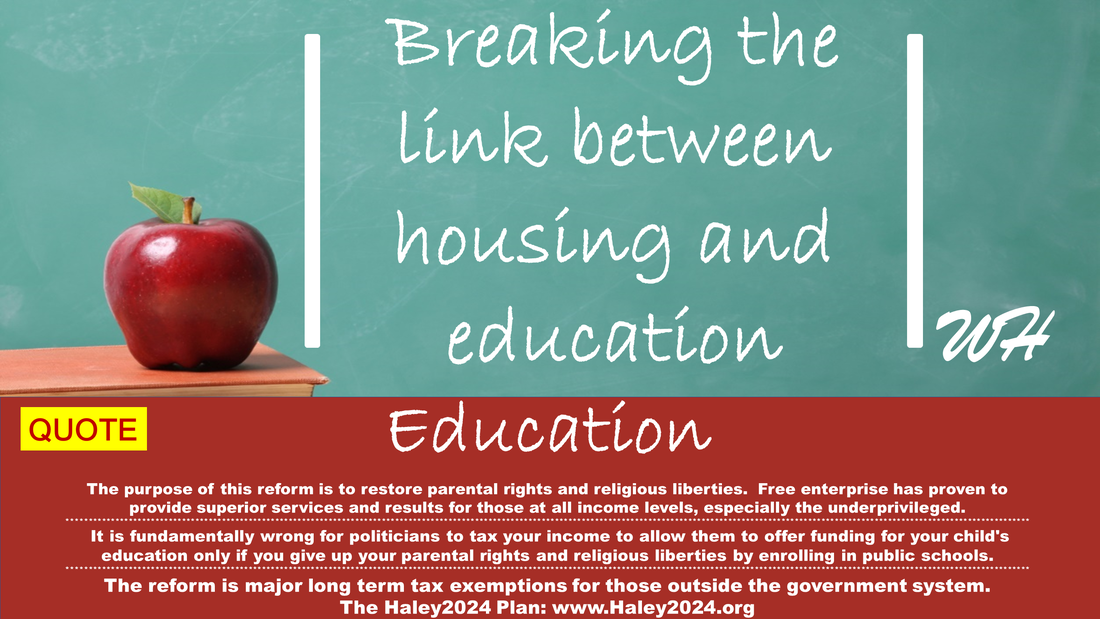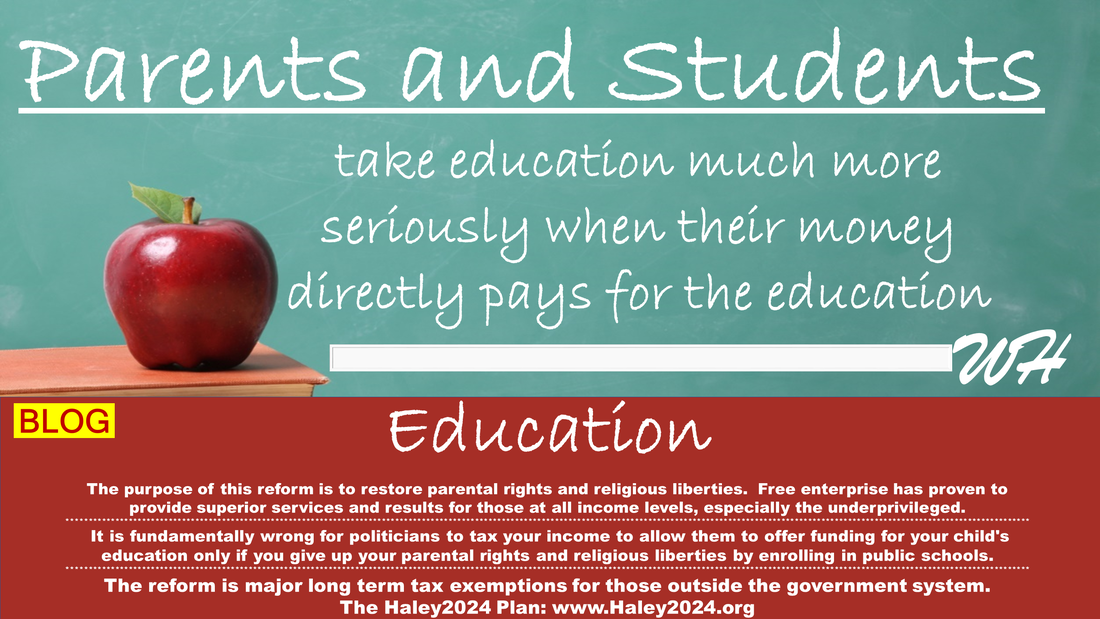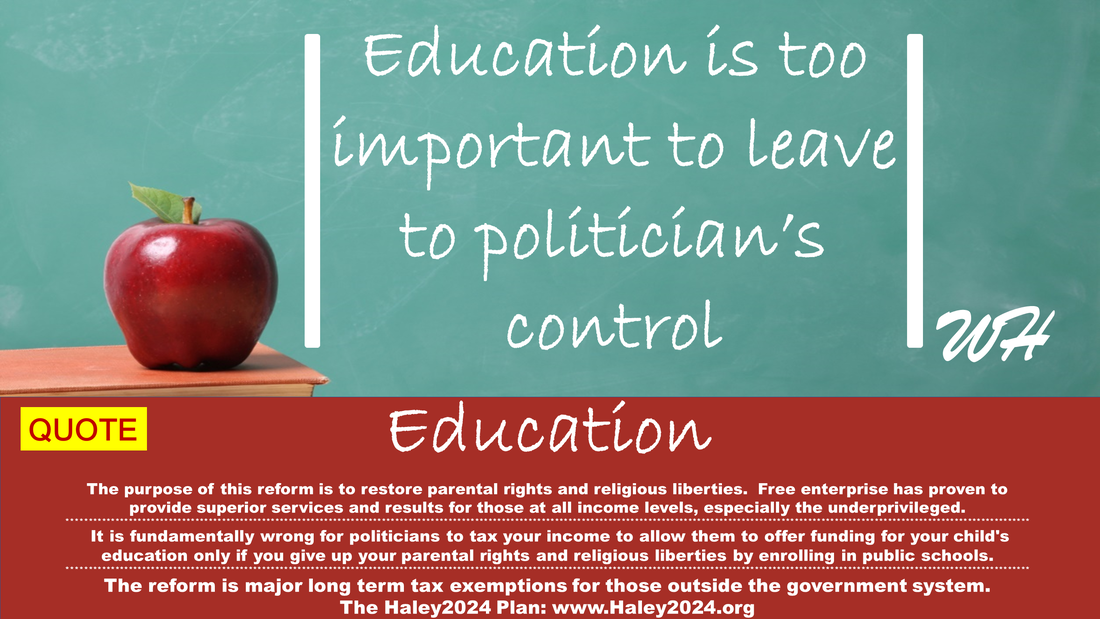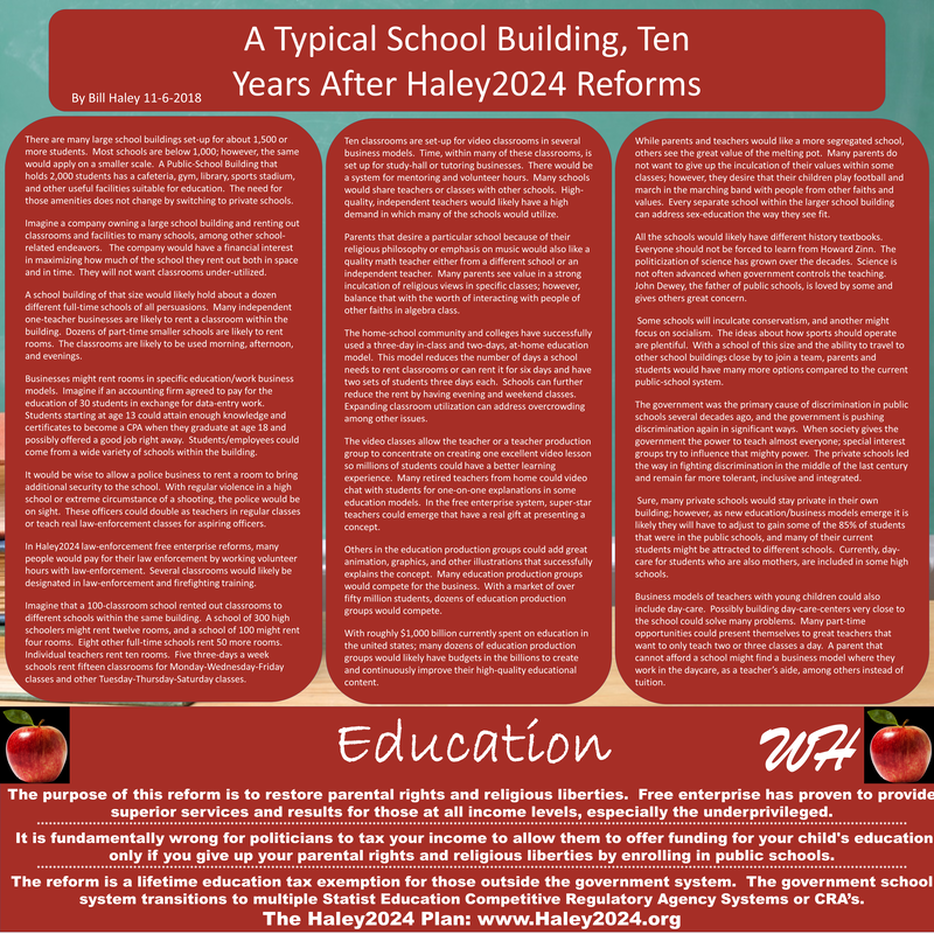| There are many large school buildings set-up for about 1,500 or more students. Most schools are below 1,000; however, the same would apply on a smaller scale. A Public-School Building that holds 2,000 students has a cafeteria, gym, library, sports stadium, and other useful facilities suitable for education. The need for those amenities does not change by switching to private schools. |
| Imagine a company owning a large school building and renting out classrooms and facilities to many schools, among other school-related endeavors. The company would have a financial interest in maximizing how much of the school they rent out both in space and in time. They will not want classrooms under-utilized. |
| A school building of that size would likely hold about a dozen different full-time schools of all persuasions. Many independent one-teacher businesses are likely to rent a classroom within the building. Dozens of part-time smaller schools are likely to rent rooms. The classrooms are likely to be used morning, afternoon, and evenings. |
| Businesses might rent rooms in specific education/work business models. Imagine if an accounting firm agreed to pay for the education of 30 students in exchange for data-entry work. Students starting at age 13 could attain enough knowledge and certificates to become a CPA when they graduate at age 18 and possibly offered a good job right away. Students/employees could come from a wide variety of schools within the building. |
| It would be wise to allow a police business to rent a room to bring additional security to the school. With regular violence in a high school or extreme circumstance of a shooting, the police would be on sight. These officers could double as teachers in regular classes or teach real law-enforcement classes for aspiring officers. |
| Imagine that a 100-classroom school rented out classrooms to different schools within the same building. A school of 300 high schoolers might rent twelve rooms, and a school of 100 might rent four rooms. Eight other full-time schools rent 50 more rooms. Individual teachers rent ten rooms. Five three-days a week schools rent fifteen classrooms for Monday-Wednesday-Friday classes and other Tuesday-Thursday-Saturday classes. |
| Ten classrooms are set-up for video classrooms in several business models. Time, within many of these classrooms, is set up for study-hall or tutoring businesses. There would be a system for mentoring and volunteer hours. Many schools would share teachers or classes with other schools. High-quality, independent teachers would likely have a high demand in which many of the schools would utilize. |
| Parents that desire a particular school because of their religious philosophy or emphasis on music would also like a quality math teacher either from a different school or an independent teacher. Many parents see value in a strong inculcation of religious views in specific classes; however, balance that with the worth of interacting with people of other faiths in algebra class. |
| The home-school community and colleges have successfully used a three-day in-class and two-days, at-home education model. This model reduces the number of days a school needs to rent classrooms or can rent it for six days and have two sets of students three days each. Schools can further reduce the rent by having evening and weekend classes. Expanding classroom utilization can address overcrowding among other issues. |
| The video classes allow the teacher or a teacher production group to concentrate on creating one excellent video lesson so millions of students could have a better learning experience. Many retired teachers from home could video chat with students for one-on-one explanations in some education models. In the free enterprise system, super-star teachers could emerge that have a real gift at presenting a concept. |
| Others in the education production groups could add great animation, graphics, and other illustrations that successfully explains the concept. Many education production groups would compete for the business. With a market of over fifty million students, dozens of education production groups would compete. |
| While parents and teachers would like a more segregated school, others see the great value of the melting pot. Many parents do not want to give up the inculcation of their values within some classes; however, they desire that their children play football and march in the marching band with people from other faiths and values. Every separate school within the larger school building can address sex-education the way they see fit. |
| All the schools would likely have different history textbooks. Everyone should not be forced to learn from Howard Zinn. The politicization of science has grown over the decades. Science is not often advanced when government controls the teaching. John Dewey, the father of public schools, is loved by some and gives others great concern. |
| Some schools will inculcate conservatism, and another might focus on socialism. The ideas about how sports should operate are plentiful. With a school of this size and the ability to travel to other school buildings close by to join a team, parents and students would have many more options compared to the current public-school system. |
| The government was the primary cause of discrimination in public schools several decades ago, and the government is pushing discrimination again in significant ways. When society gives the government the power to teach almost everyone; special interest groups try to influence that mighty power. The private schools led the way in fighting discrimination in the middle of the last century and remain far more tolerant, inclusive and integrated. |
| Sure, many private schools would stay private in their own building; however, as new education/business models emerge it is likely they will have to adjust to gain some of the 85% of students that were in the public schools, and many of their current students might be attracted to different schools. Currently, day-care for students who are also mothers, are included in some high schools. |
| Business models of teachers with young children could also include day-care. Possibly building day-care-centers very close to the school could solve many problems. Many part-time opportunities could present themselves to great teachers that want to only teach two or three classes a day. A parent that cannot afford a school might find a business model where they work in the daycare, as a teacher’s aide, among others instead of tuition. |

